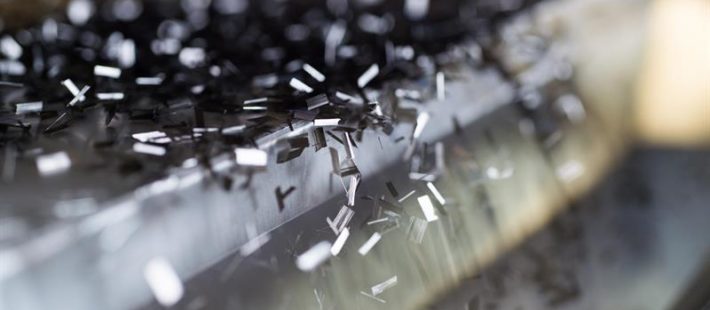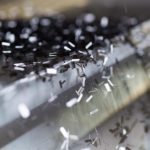Recycling: Fibre recovery as a model for the future
The increasing use of composites makes the question of their recycling more and more urgent. The challenge in recycling fibre-reinforced plastics lies in their material composition. Thermal recycling is possible in specialised companies. The efficient use of e.g. glass fibre reinforced plastics (GRP) in rotor blades offers the cement industry an alternative to fossil fuels. The ash produced during combustion contains a very high proportion of minerals and can therefore also be used as a raw material substitute in cement production. This material recycling is well established today. Parallel to this, European technology platforms are also intensively focusing on recyclability in materials research in order to ensure easier recyclability in the future.
Numerous studies and projects are currently being carried out on fibre recovery in order to optimise the disposal processes in wind power parallel to thermal recycling. Here, the thermal decomposition process for organic substances – pyrolysis – plays the most important role. In this process, the bonds between the fibres and the matrix are broken by heating to 600 to 800 °C in the absence of oxygen. This results in complete decomposition of hydrocarbon compounds.
In this way, organic and inorganic substances can be separated from each other without causing quality changes in the glass or carbon fibres. This is particularly economical for expensive fibres in carbon fibre reinforced plastics (CFRP), as this process is very energy- and cost-intensive. GRP is cheaper, so it is not worth using such an energy-intensive method. Further possibilities for fibre recovery are chemical processes such as solvolysis, hydrogenation and alcoholysis. These have the advantage that they require less energy than pyrolysis. It is currently being clarified whether these processes can be transferred to large-scale applications.
Market acceptance as a target for recycled carbon fibres
The establishment of a resource-efficient material cycle for CFRP is an important building block for further development. «Technologically, the question of reusing carbon is fundamentally solved. At present, final research and development activities are taking place in order to further increase the already existing recycling share in process chains and to permanently improve the market acceptance of components with recycled carbon fibres (rCF)», explain the experts.
In order to achieve this, e.g. by-cuts are already being processed into nonwovens and the components produced are being reintroduced into the value chain. In addition, secondary (production waste) and recycled (end-of-life) fibre materials are used, for example in injection molding compounds. In addition, there are already contractual agreements between aviation companies and the recycling industry for the economic use of these material flows.
According to Carbon Composites e.V., the acceptance of the material must also be increased through the introduction of standardization procedures for semi-finished products made from recycled carbon fibres, thereby improving the market penetration of this recyclable material. The authors come to the conclusion that the use of rCF is worthwhile despite the lack of standards: «The use of pure recyclates for small batches, in particular, is an economically sensible area of application».
Source: Composites Europe












